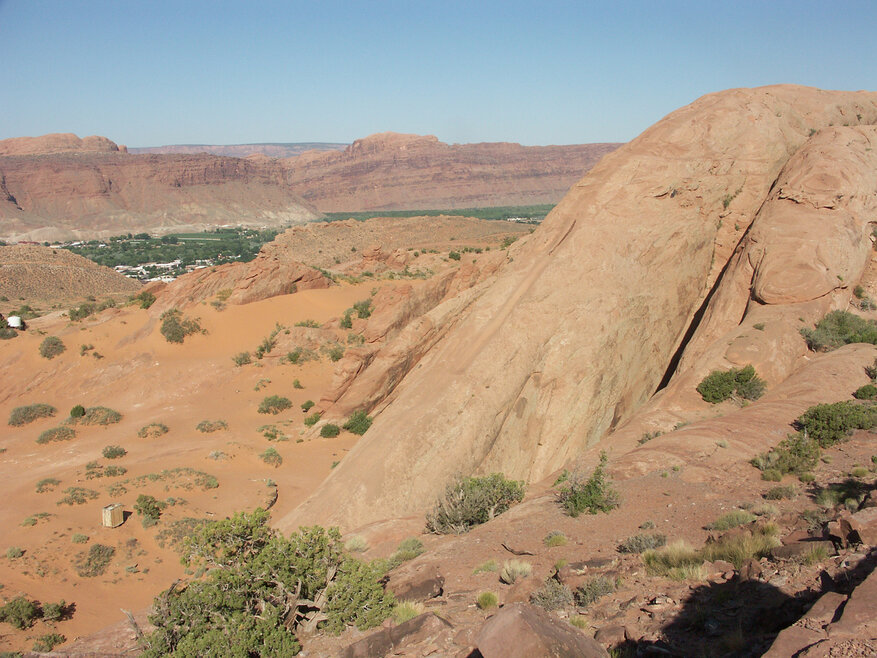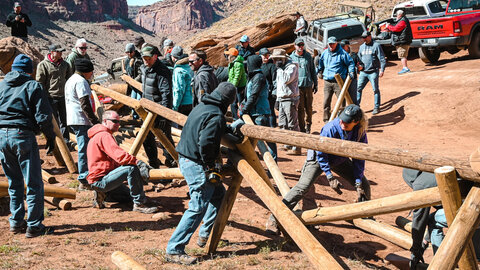by Matt Konkle
Managing Editor
MOAB, UTAH — For years, Lion’s Back was one of Moab’s most iconic off-road trails. A narrow sandstone ridge that rose steeply from the desert floor, it became a proving ground for four-wheel-drive enthusiasts. Climbing it took skill and dedication. Descending it took courage. And anyone who made it up and back had a story to tell. But if you head to Moab today looking to conquer Lion’s Back, you’ll be disappointed. It’s closed — and has been for over two decades.
Why?
Well, here’s what happened to one of Moab’s most famous trails.
In its prime, Lion’s Back wasn’t a long trail. Heck, it wasn’t even really a trail. Spanning just 350 feet from base to summit, at a 65-degree incline, it was more of an intense experience rather than a formal trail like Hell’s Revenge or Poison Spyder.
The rock formation earned its name from its curved spine-like shape. And while it sat on private land, the owners allowed off-roaders to access it for decades.
What made Lion’s Back renowned to Jeepers across the country wasn’t just the climb — it was a difficult turnaround at the top and then the descent. It had a steep grade, tight line and zero room for error. This led to numerous photos and videos of Jeeps, trucks, and even rented SUVs crawling over the rock, which, for many off-roaders, soon became an ambition and a must-do goal.
While it is tough to determine how many overall accidents happened on Lion's Back, when some did happen, they became high-profile. In one well-known incident, a 4x4 vehicle lost its brakes and rolled down the rock, plunging 30 feet to the ground. The footage went viral, and the trail's notoriety only grew.
In 2004, the land changed hands. The new owners had different plans: they were building a high-end resort. The Lionsback Resort project, as it came to be known, and those owners aimed to turn the area into a luxury lodging destination catering to tourists. Not rock crawlers.
With construction and development looming, public access to the trail was cut off. Safety and liability concerns and land-use priorities made it clear that Lion’s Back as a recreational trail was no longer an option.
The project was controversial in Moab for years, sparking debates about conservation, tourism, and the balance between outdoor access and development. After some significant delays, the Moab City Council in 2021 finally voted to approve Lionsback Resort.
Today, that luxury development is taking shape and includes townhomes, a lodge, and direct access to Moab’s natural beauty — just not the way off-roaders once enjoyed.
Developers believe this resort will serve as a basecamp for trips to Arches, Canyonlands, Sand Flats, and other outdoor adventures.
So, instead of tire tracks on that Lion's Back slickrock and chirping tires, you’ll now find paved roads, eco-conscious architecture, and homes, both finished and under construction, with views of the surrounding red rocks and La Sal Mountain range. For old-school Moab enthusiasts, it’s a jarring transformation.
Even though the trail has been closed now for two decades, Lion’s Back is still part of the off-roading culture around Moab. You’ll see its silhouette on t-shirts and decals all over town. It’s a reminder of an older, wilder side of Moab — one that thrived on grit, gears and perseverance. Not high-end comforts or concierge service.
Though the trail is gone, its legacy will survive with everyone who took that 350-foot run up and back. It helped shape Moab into a world-class off-roading destination, and provided legions of off-road enthusiasts with inspiration and goals.
Related Articles:
How To Prepare For Off-Roading in Moab
2025 Easter Jeep Safari Concept Vehicles — Jeep Continues To Tease Two-Door Truck






















